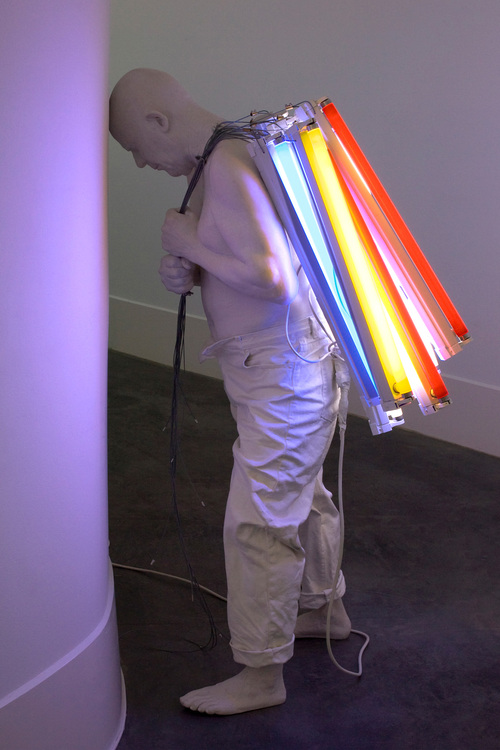Bernardí Roig: modern man facing the abyss
“Colour light exercise” is among the most emblematic works of Bernardí Roig’s production, whose success and international recognition make him one of the most outstanding Spanish creators on the current art scene.
Before the works of Bernardí Roig we are overcome by a strange sensation of discomfort that places us before the challenge of facing the conscience of our own existence and our future as a society. Despite the multidisciplinary nature of his work, Bernardí has maintained an unalterable discourse that, as critics maintain, represents a catalog of his own obsessions. Under the tragic gaze of a man whose unfathomable destiny condemns him to extinction, the artist places the human figure as the epicenter of his creations, questioning the viewer until, as the artist himself pointed out, “the work functions as a mirror in which we see a face that burns: our own”.
His work thus becomes a faithful portrait of the problems that human beings face today, finding its most genuine plastic expression in the enigmatic and white characters that star in his resin sculptures. These disturbing and disturbing works represent the culmination of the tireless experimentation that the artist began almost three decades ago when he drastically decided to put an end to his pictorial production by burning all his paintings.
Each and every one of them make up a creative corpus that, understood as a work of art in continuous expansion, stands as the monologue of a society that, faced with the loss of its identity, is thrown into an inevitable abyss of social autism and existential emptiness.
“Colour ligth excercise” is in this sense, a paradigmatic example of a creative proposal that Bernardi Roig sustains from a vast and deep cultural knowledge whose philosophical, literary and cinematographic richness are the seed under which the Majorcan artist makes the genesis of his creative discourse sprout. In it, a wide range of references from the history of art, but also literary figures such as Bernhard, Musil, Beckett or Bataille, who courageously showed us the fragility and vulnerability of human beings. and whose heartbreaking voices emerge among the contradictions, impulses and frustrations endured by the protagonists of Bernardí’s sculptures.
His lonely, desperate and bewildered characters are a powerful metaphor for the existential wound and the internal struggle of contemporary man, reflecting the permanent state of tension between a world that is drifting and the very ephemeral nature of our being. In this aspect, the symbolic connotations of light will play a determining role in the plastic and conceptual development of his work, which, as in this case, is materialized in the fluorescent neon lights weighing more than 100 kilos that the man holds on his back. This image leads us to the classical tradition and the myth of Sisyphus, whose story is here reversed in a modern key, transforming the stones that condemned him to drag until the end of his days, into fluorescent tubes that blind and make him invisible, until he is cornered into the most absolute isolation. The blinding light will act, therefore, as a metaphor for the inability of human beings to communicate within a society that, precisely because of over-information and over-stimulation, has deprived them of the guarantees on which they had built the certainties that cemented their stability and raison d’être. “Exercises of Light” is, in turn, the symbol of an amnesiac society that, in the face of its progressive loss of historical and individual memory, will also end up lacking identity. The monochrome white reinforces this idea, giving a phantasmagoric air to his characters that, more than presence, denote a certain sensation of absence increased by the blinding light of the neon lights that blur and dilute the physical limits of the sculpture.
The acute staging that Bernardí plans down to the last detail only increases exponentially the sensation of absurdity and emptiness, referring us to the baroque sense of life understood as a theater where we are all actors in the drama of our existence. His audaciously disturbing creative proposal becomes the materialization of the loneliness, lack of communication, uneasiness and uncertainty of modern man.
Theirs is an art that transcends as the sign of the burden and conditioning of everything external that, sometimes, even unconsciously we choose, as well as of that which chooses us and from which very often we cannot free ourselves. Because Bernardí, like his admired Beckett and Musil, has been able to admit and describe with extreme lucidity the fragile and volatile nature of the human spirit.






